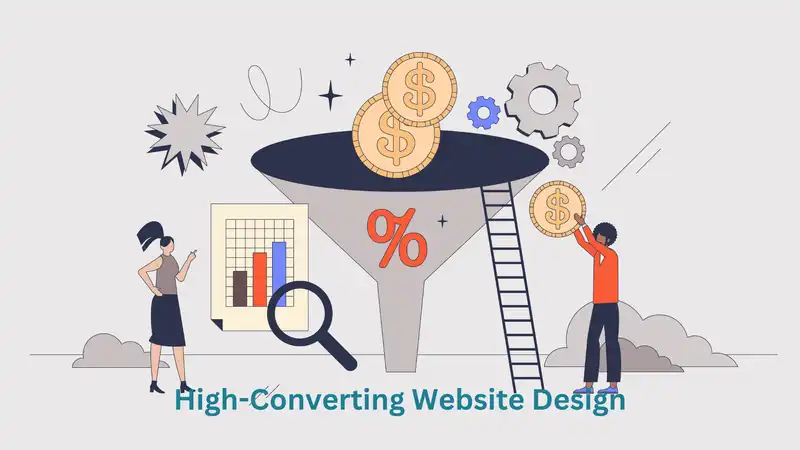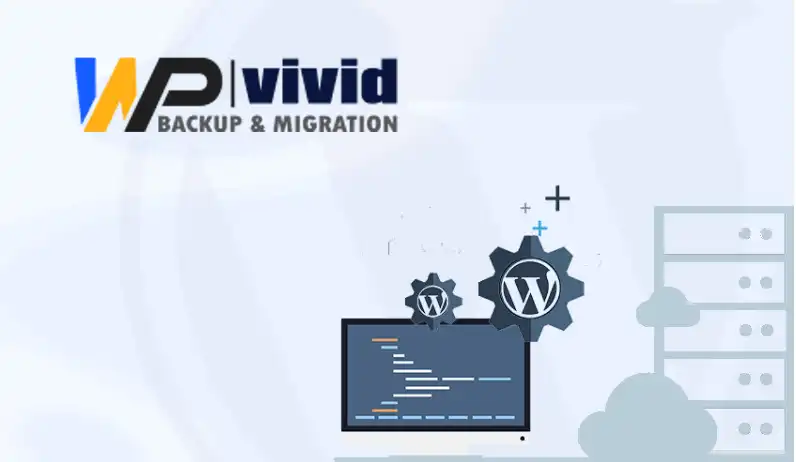Table of Contents
High-Converting Website Design: In These days, your website is essentially the storefront of your business—a salesperson working hard day and night to win over potential clients. However, a website’s success is not anchored in the mere fact of having one, but rather in how it functions and triggers desired actions from visitors, whether that includes buying a product, subscribing to the newsletter, or requesting a quote.
Five must-have elements of high-converting website design are all laid out in this ultimate guide, built on a decade long experience in the web design industry. Let us find out how all these five elements work to optimize the conversion rate optimization and lead generation possibilities of your website. Let’s ensure that your online presence attracts not just visitors, but loyal customers.
Why Conversion-Focused Web Design Matters
Far too often, they spend a truckload of money just getting people to their websites, only to achieve sad website performance. Most of the time, it’s the website design that is at fault. A well-optimized website has the ability to get people from a casual visitor to a lead or sale, which is why website conversion optimization is such a crucial part of any online business.
Whether it’s a website that’s just been launched, a site redesign, or just modifications made to an existing website for added performance, these next five components will be game-changers when it comes to your lead generation efforts.

1. A Crystal-Clear Value Proposition
A clear value proposition is vital for any high-converting website. This is the special benefit that you offer, differentiating you from the competition. It’s telling the visitors why they should choose you.
Why Important It Is?
Within the initial seconds a visitor lands on your page, your value proposition should be enough to capture attention and communicate with exactitude what you offer for whom, and why it’s going to be the best choice. A strong value proposition can be the thing that stops a prospect from leaving your site, rather than turning them into a lead.
How to Implement
Your value proposition should be front and center on your homepage hero, then supported all the way through on product pages, in your “About” section, and even in your footer.
Best Practices for a Compelling Value Proposition:
- Be specific: Avoid generalizing and make sure to clearly state your unique selling points.
- Benefits-driven: Instead of going into product features, show how the product or service helps customers live better lives.
This is what you want to see: - Conciseness: Convey a clear, strong message the visitor should understand in the blink of an eye.
- Data-Driven: A few concrete numbers or results to demonstrate value.
- Test and Iterate: Employ A/B testing to optimize the value proposition based on visitor response.

2. Intuitive Navigation for the Best User Experience
Intuitive navigation is the backbone of the user-friendly website. It helps visitors to flowlessly move to the information they are looking for and learn about new products or services; a well-structured navigation enhances user experience and guides visitors towards your conversion goals.
Why It’s Essential:
Chances for high bounce rates really rise in case of a confusing or poorly designed web navigation system. Conversely, intuitive navigation keeps visitors interested and actually on the site for longer, increasing the chance of actual conversion.
How to Implement:
- Simplify: In the main menu, have only essential pages; the rest either put into dropdowns or a footer menu.
- Label clearly: No jargon; just easy-to-understand, descriptive labels.
- Add a search bar: This way a visitor can be able to retrieve information fast.
- Keep it consistent: Navigation should look the same on all pages.
- Use breadcrumbs: Users want to know where they are in relation to your site’s hierarchy.
- A sticky header: This way navigation is available upon scrolling.
- Make it responsive and mobile-friendly: Be sure the user can navigate your site easily from any device.

3. Interesting and Relevant Content
This is the part of your website that breathes real value into your visitors, putting you in a position of authority through this valued information and makes conversions happen. It’s the information that answers questions, pinpoints pain points, and directs visitors to most desirably arrive at a purchase of your product or service.
Why It’s Essential:
High-quality content can attract, engage, and even help optimize search engines. Inform and communicate important messages, which can lead to more organic traffic for better search engine ranking of the website.
How to Implement:
- Know your audience: Tailor content to the specific needs and interests of your target audience.
- Address problems: Potential clients are looking for solutions to everyday challenges.
- Tell a Story: Share case studies, testimonials, and stories.
- Lay it all out for easy reading: Make it scannable with headers, bullet points, and short paragraphs.
- Add Images: Put in images, infographics, or even videos.
- Refresh with New Content: Posting new content all the time ensures the customer comes back more often.

4. Trust Signals and Social Proof
Online conversions depend on trust. What trust signals and social proof can do is remove some of this cynicism from visitors by showing others’ great experiences thus propelling them to convert.
Why This Is Critical:
In the world of online, trust is currency. If visitors can see others engaging with your brand in a positive manner, then they are likely to do the same.
How to Do It:
- Customer Testimonials: let clients give real feedback about what happy customers are saying.
- Case Studies: Display real-life scenarios with evidence of your products and services benefiting others.
- Reviews and ratings: Giving all the reviews and even the negative ones.
- Social media proof: Your social media following and great mentions.
- Trust badges: Awards, certifications, or security seals that can be used to help build your credibility.
- Client logos: Logos of well-known clients to create bout trust by association.

5. Clear and Compelling Calls to Action (CTAs)
Calls to action are the guiding lights that direct your visitors towards conversion. They should be clear, concise, and well-placed on your website in a strategic manner.
Why it’s important:
CTAs remove ambiguity of the desired action, making it very clear what a visitor needs to do next. A strongly worded CTA can boost conversion rate optimization efforts.
Implementation:
Use action-oriented language: Initiate a powering verb to have a clear definition of what you wish the visitor to do.
Create urgency: Add words like “now” or “limited time” to encourage instant action toward doing it.
- Make them stand out: Make sure that they will be seen, either because of contrasting colors, white space, or by placing them appropriately.
- Personalize: State directly to the visitor by using terms like “Start my free trial.”
- Reduce risk: Add guarantees or any risk reducers.
It is within these five core elements that make up a website’s high-converting design that activity on your site will not only pull in visitors, but lead them to follow a predetermined path that produces results far more useful than just simply looking at what you’ve got. Remember that website optimization is a process; it isn’t a time-bound task. Keep analyzing the data, gathering feedback, and refining your approach to make sure the site stays a powerful tool for lead generation and business growth.







